Snags and sudden shifts in the current came out of nowhere as we dodged left and right around dangerous gravel bars that shot water back and forth across the river. The shantyboat shook as the skegs bumped across rocky shoals. I didn’t want to think about what this was doing to the wooden hull.I was at the helm, white knuckles on the wheel. “Freddie,” our 30-hp Mercury outboard, was trimmed barely in the water to keep the prop off the rocks, running at full throttle for a measure of control. My shipmate Benzy was at the bow urgently calling out hazards and depth; Hazel, the ship’s hound, cowered under the table. I was sure we would end up deeply stuck, if not seriously damaged or sunk. The river rocketed through a single twisted channel and took us along with it, slaloming the clunky shantyboat hard left and then hard right shooting us through a series of rock bars and snags, their jagged teeth raking either side of the hull.This stretch of California’s Sacramento River was the sketchiest bit of boating I’ve done in a thousand miles and ten years of sketchy boating. We were shooting the Upper Sacramento River in a rustic wooden barge-bottomed houseboat. It was a boxy behemoth that had no place on this section of the river where sleek jet boats fly over the shallows.
Join The Conversation
We welcome your comments about this article. To include a photo with your remarks, click Choose File below the Comment box.

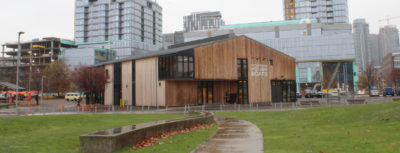

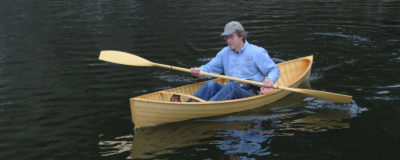
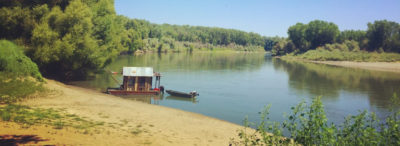
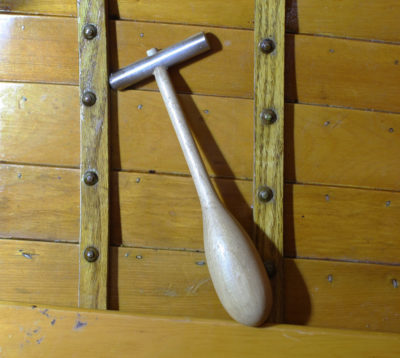
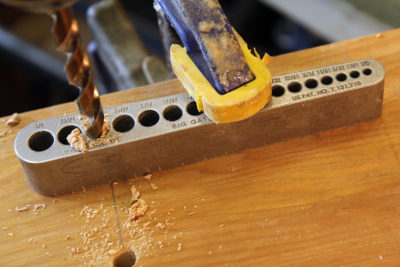
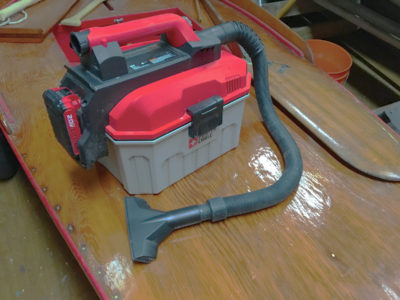

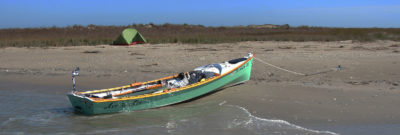
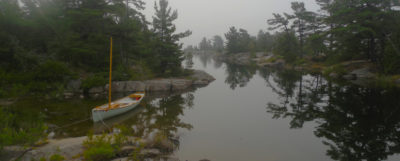

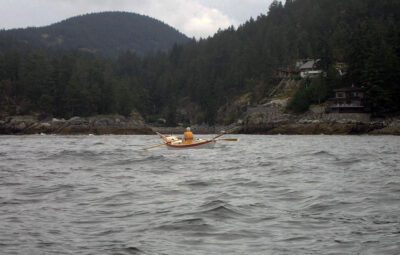
Wow! An epic adventure. I have a few rivers I would like to float; your Sacramento article reminds me of why I want to do it. Family obligations have prevented this so far, but there is always tomorrow. Thank you for a wonderful story and adventure. I love your boat!
Enjoyed! Thanks!
Excellent article, well written, and very compelling. Thank you!
Wes Modes’ Project is big and beautiful and essential to the watery heritage of our country.
GM and the Interstate have blunted our historical vision and have nearly extinguished our memory of a time when we were a three-ocean maritime nation blessed with an intricate, life-giving freshwater matrix of rivers and streams that carried Everything. Roads are relatively recent adjuncts to the millennia of thin-water transport on this continent. Highways appeared with the 20th century. Rivers were our interior connections. The adventures of steamboats surging up and down the Mississippi, Ohio, Hudson and Missouri Rivers beggars the cowboy cattle drives as adventure. Mark Twain saved a tiny remnant for us but the big story has yet to be written.
We’ve forgotten the enormous flow of river commerce. Strangely, we’ve nearly forgotten the technology that eclipsed river travel. After the Civil War, railroads dominated travel everywhere. We cross rusty tracks and marvel at occasional freight trains, forgetting the steam-powered, original railroad robber barons conning and playing the national economy like a piano, grabbing government funds like kids at a dessert buffet.
We have historical myopia, and we see living water as little more than a barrier to land travel. The lumber and stone that built the big eastern cities arrived by water. The bulk ore and coal and grain that fueled our Industrial Revolution arrived by ship and barge. The first steamboats plied the Hudson River. The Gold Rush came from California’s American River. Lewis and Clark pushed into the American West by way of the Missouri River and reached the Pacific on the Columbia River’s flow.
I was raised by the Ohio River in an industrial city, Wheeling, West Virginia. The River was filthy, treacherous, unpredictable, and essential to the growth of a muscular nation. Barges nosed up and down the brown water at all times of the day, They hooted through the night, stabbing searchlights, finding their channels. Ringling Brothers and Barnum and Bailey Circus arrived in later summer at Wheeling Downs Race Course by barge, floating downstream from Pittsburgh, its flatboats of equipment and menageries led by one of my memory’s most vivid artifacts: a steam calliope trilling and blasting from its own small barge, playing Sousa marches and old cakewalk stomps, every note piercing the ear and punctuating the air with a blast of white steam from its hundreds of note-whistles.
Wes Modes has a lot to tell about folks who still live on the rivers. Start recruiting apprentices, Wes! There’s much more adventure and mystery to unfold. As an historical writer my principle is simple and fascinating: all the good stories are real.
Hey Wes, how fun is to read about some of my old haunts outside of Chico. Having “tubed,” and partied on its banks in high school, taking inflatable boats down The River (in the local vernacular) and hearing stories of bass fisherman pulling 400-lb sturgeon out of its waters in the ’70s, I can only imagine how strong that river felt once you got on it. We all knew to respect it, the lazy look of it belies its power. What an amazing, ongoing adventure and how incredible to see it all from the rivers.
Man, you tell a great story Wes. Thanks
Good story. Rivers have long been a place for folks who don’t really mesh with the mainstream. My dad remembers the shantyboat community here in our Mississippi town. They made their money selling fish and freshwater shrimp and catching stray logs to sell at the mill. They all disappeared in the 1960s, but legend has it that the lower White River in Arkansas (not far north of our place) still has some river folk. It is illegal for them to live there, at least in the federal refuge, but several pilots I know who have flown over in the winter time say the shantyboats are not all gone.
Oh, come to Florida and do the Suwannee!
Jim and Pat
Over the years, we here in British Columbia have had far too many derelicts vessels left for the taxpayers to clean up the mess.
Although this is a Huck Finn adventure and fun to read, what happens if these floating homes become the norm in your waterways?
Wes, what can I say other than WOW. Your story gave me hope of a time long forgotten. I am a Viet Nam vet who was disabled and now in a wheelchair but that doesn’t stop me from reading your story then closing my eyes to imagine myself on a shantyboat floating down a river. Thank you for the few moments you gave back to me.
We had a similar (if not the same) sort of vessel at the previous wooden boat show in Hobart, Tasmania.
We live just west of where you left the river, in the town of Oakley. I’ve been to most places you’ve mentioned by boat and car; by paddle in my kayak closer to home. I could become a river rat and live in a houseboat or shantyboat. I used to know a couple of gentlemen who grew up in Oakley and on the river (Sacramento and the San Joaquin). One was a farmer and the other was a tugboat/river boat captain. More likely river pirates. I learned where things were dumped in the river, best sturgeon holes and striper fishing, and where the best blackberries grew. I will continue following your adventures. Stay safe.
I am also a sailor of rivers. I’ve sailed the waters of the Ticino and the Po rivers in Italy and have often rowed the Po from Pavia to Venice.

Very nice, this tale, truly impressive.
This is an adventure many of us dream of. Thank you for sharing your wonderful trip along with the great photos!
Thank you for your neat saga about your river voyage on the Sacramento. i also cruised my houseboat and patio boat for years up and down the river, with lovely long weekends on the American as sweet bonuses. It’s a wonderful life—thanks for sharing. Looking forward to more of your adventures.
The people who used to live in shanty boats on the river have been forced off the water onto rivers of concrete, parking their run-down RVs on out-of-the-way streets and parking lots.
Great story! We go out on the delta a lot. I live near marinas off 8 Mile Road, Stockton, California.
Great story Wes! Reminds me of Harlan & Anna Hubbard’s stories of Shantyboat Life and living at Payne Hollow which is on the Ohio River roughly between Louisville and Cincinnati. There is a group of volunteers working on the restoration of Payne Hollow to preserve Harlan’s artwork and stories of life on and near the Ohio River. Wes, have you finished your “Secret History of American River People” and if so where can I get information on it? Loved Jan Adkins comments also. Cap’n Tom